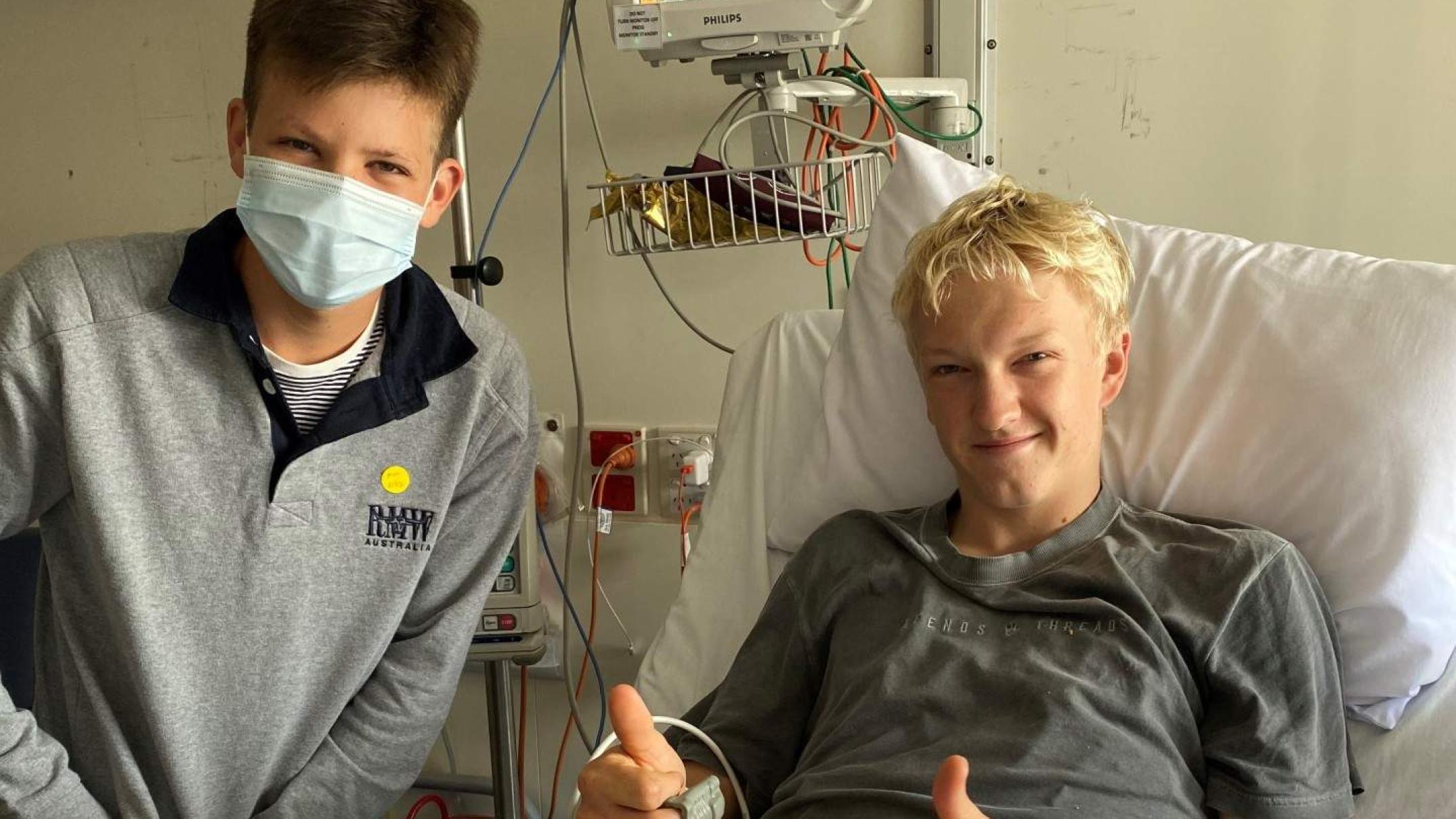Advice from his mum and the quick actions of his mate saved a 16-year-old schoolboy bitten by a deadly brown snake at Cummins on South Australia’s Eyre Peninsula during the school holidays.
Key points:
- The majority of snakebites and snakebite deaths in Australia are from the brown snake family, but the species predominantly does not inject venom
- Most deaths from brown snakes occur due to cardiac arrest before arriving at hospital
- Administering a compression bandage and remaining immobilised increases your chances of survival
Isaiah Wilksch wants to raise awareness of snakebite first aid after he was bitten three times by a 1.5-metre brown snake while playing golf with his friend Levi Chandler.
“I thought I’d stepped on a stick with my other foot and the end of the stick just poked into my leg,” Isaiah said.
“But when I looked down, I saw a brown snake slither off and I knew I’d been bitten.
“I must have stepped on it, I think, but I’m not really sure.
Women’s and Children’s Hospital head of toxicology Julian White said brown snakes caused the majority of snakebites and death by snakebite in Australia, with an average of two to three deaths each year.
Professor White said the majority of the deaths were from cardiac arrest before reaching hospital so the actions of Isaiah and his friend immediately after the bite helped save his life.
Mum’s ‘ironic’ warning
Isaiah’s mother Julie Wilksch had warned her son about snakes that morning.
“Ironically, I’d raised it with him two or three times,” she said.
Levi’s mother had put a makeshift snakebite kit, including a bandage and instructions, in her son’s golf buggy.
Isaiah remained calm and still and phoned triple-zero for assistance while Levi bandaged his leg.
‘I vomited blood’
Isaiah was taken to the Cummins and District Memorial Hospital and then Port Lincoln Hospital where swabs confirmed the brown snake had injected him with venom.
“It [the venom] thins the blood and that’s how the snake kills its animals — it thins the blood then they bleed out on the inside.
“As the antivenom was being pumped in, I vomited once and vomited up a bit of blood and that was the venom thinning out my blood in my stomach.”
Professor White explained that the venom reduced the ability for the blood to clot by destroying the clotting protein.
Isaiah stayed three days in hospital until his blood slowly improved.
But Ms Wilksch does not credit luck with saving her son, instead attributing his survival on his preparedness and remaining calm under pressure.
“They both didn’t over-react and they were prepared with the snakebite kit,” she said.
Small fangs but ‘potent’ venom
Professor White said snakebites were an uncommon event and strikes from brown snakes were often dry bites where no venom was released.
“Rates of envenoming is quite low because they only have small fangs and only a small amount of venom available,” he said.
Professor White said education about first aid for bites could save lives.
“There is a phone app … called the Australian Bites and Stings App, which is free,” he said.
“[It] provides first aid information of all sorts of bites and stings in Australia and it’s the sort of thing that everyone who has a mobile should probably have on their phone.”
Isaiah is back at boarding school this week and is looking forward to finishing that round of golf at Cummins in a cooler season.




